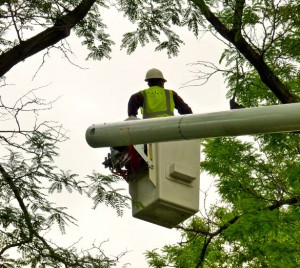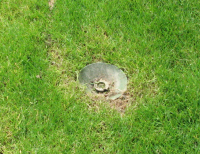Fall may seem like the perfect time to take a bit of a yard work break after working hard all summer long but you should resist the urge to sit inside with a mug of tea regardless of how tempting it is. With every season comes a new opportunity and fall gives you the perfect opportunity to ensure that your yard will look its best come spring. Fall is also the best time to tend to the trees on your property and give them a little tender love and care. It’s easy to forget about your trees but there are a few things you should do every fall to keep them as healthy as possible and looking their best.
Water
Most trees have large enough root systems that they don’t require watering but that may not be the case for many of the trees that are suitable for planting in a yard. The reason for this is that trees with smaller root balls are often preferred when it comes to landscaping due to the fact that they are less likely to cause damage to foundation. If your trees fall into this ‘small root ball’ category, it is likely that they are going to need a drink of water after withstanding the drought of the late summer months.
Hopefully, you have a sprinkler system installed with a head or two close to the base of your tree. Assuming that your sprinklers were running on a regular basis during the summer, your trees may not need a whole lot of extra watering during the fall. If not, set your hose at the base of the tree and water deeply. Place mulch around the base of the tree to help it retain water throughout the winter months. Make sure to pull the mulch an inch or two away from the base of the tree to prevent decay.
Prune
Mid to late fall is the best time of year to trim and prune your trees. You will know it’s time to do so when all of the leaves have fallen off of the deciduous trees. The reason for this is that wounds close faster in the late fall leaving less time for fungus and bacteria to grow. Remove any branches or trees that are dead or impeding accessibility to a walkway or other structure.
If you happen to have large trees on your property that showing signs of becoming a possible safety hazard (ie, branches too close to your house, dead or weakened wood, too dense of a crown, etc) it is best to consult with a professional to help you remove them.
Stake any young trees on your property to help support them against the strong winter winds. Most young trees don’t have root balls large enough to withstand the harsh winds and snowfall. When staking a tree, use two or three short stakes and place them around the tree but far enough away not to disturb any roots. Tie the tree to the top of each stake using a figure-eight loop. Make sure not to secure it so tight that the ties rub or tub against the trunk of the tree causing damage.
Author Bio:
Evan Baker is a new home owner in the Denver area who is learning about home maintenance and lawn care through trial and error. When he’s not fumbling around his new home you can often find him hiking with his dog Sam.


